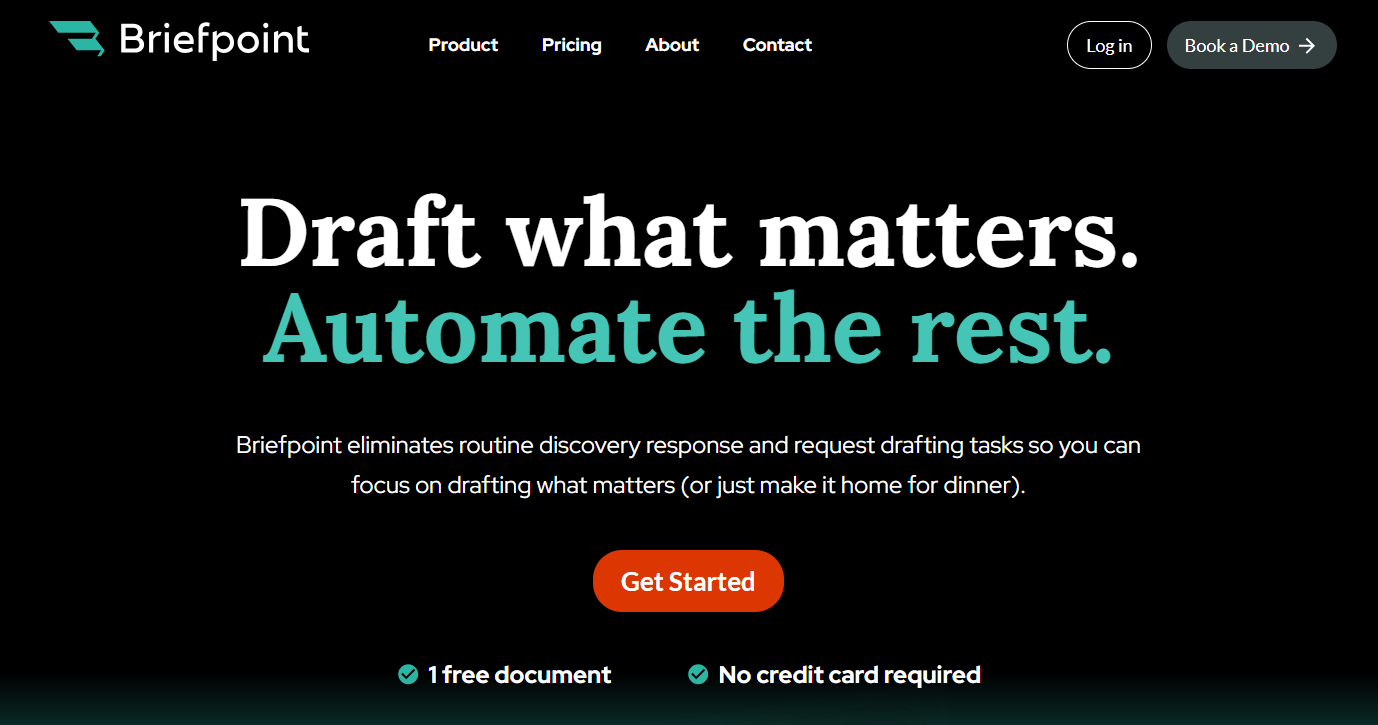Make RFP Automation Work for Your Business
Make RFP Automation Work for Your Business
An RFP, or request for proposal, is a formal document companies use when they’re searching for vendors or partners. It outlines what they need, and it’s up to you to respond with a clear, detailed plan showing how you’ll meet those needs.
Sounds simple, right? But anyone who’s actually gone through the process knows it’s anything but. Manually responding to RFPs can be a time sink.
You end up digging through folders, copying answers from old files, double-checking facts, and chasing down teammates for input. And that’s before you even start formatting the final proposal.
If that sounds familiar, you’re not doing anything wrong; it’s just the way most teams handle it. That’s exactly why more businesses are turning to RFP automation and why you might want to, too.

What is RFP Automation?
RFP automation is the use of software to speed up and simplify the RFP response process. Instead of building each proposal from scratch, automation tools help you reuse your best content, assign tasks to the right people, and manage everything in one organized system.
At its core, RFP automation improves RFP response management by making it easier to find accurate answers, assign work to subject matter experts, and deliver polished proposals on time. These tools can also handle security questionnaires, which are often time-consuming and repetitive.
Many platforms now use natural language processing to suggest the best content based on how a question is worded. That means you’re not just pulling canned replies but also getting tailored responses that sound like they were written for that specific request.
With RFP automation, you can:
- Speed up the response process with smart content suggestions
- Cut down manual work by generating answers from a shared library
- Assign sections to subject matter experts with built-in workflows
- Improve consistency with approved, accurate answers
- Handle security questionnaires without last-minute stress
What Is RFP Automation Software?
RFP automation software is a tool that helps teams respond to proposals faster by organizing content, assigning tasks, and reusing approved answers. It’s built to reduce the manual effort that usually goes into answering the same types of questions over and over.
The software keeps everything in one place, including your responses, team comments, deadlines, and drafts, so you’re not jumping between emails or files to piece things together. It also makes it easier to keep answers accurate and consistent across different proposals.
Some tools even suggest content based on past responses to help you save time when you’re under pressure. With everyone working from the same system, the process runs smoother, and your proposals go out quicker.
How Do You Automate RFP Responses?
Automating the RFP response process doesn’t mean handing everything over to a machine. It means cutting down on repetitive work, so your team can focus on writing strong, thoughtful answers.
With the right system in place, you can respond faster and reduce the stress that usually comes with tight deadlines. Here’s how you can set up a smart and efficient RFP response management process using automation tools:
1. Build a Central Content Library
The first step in automating your RFP response process is setting up a robust content library. This is where you store your previous responses, company facts, product details, and other valuable resources in one organized place.
A good library makes it easy to find the right content quickly, which can help your team deliver accurate responses without wasting time. Some tools use machine learning to suggest the best answer based on the question’s context.
2. Use Natural Language Matching
Modern RFP tools use natural language processing to understand how questions are asked, even if the wording changes. This helps the software suggest the most relevant answers from your library, so you’re always starting from a strong place.
3. Assign the Right People Automatically
One of the smartest things RFP software can do is route each question to the right subject matter expert without you lifting a finger.
Legal questions go straight to legal. Product questions land with your technical team. Everyone gets notified, knows what to work on, and sees their deadlines upfront.
This keeps the entire process moving smoothly and avoids confusion or delays. You don’t have to waste time repeating the same steps or chasing people for input. It also keeps your sales process in sync with your proposal efforts, so nothing falls through.
4. Generate Draft Responses
Let your RFP software take the first pass at answering questions. By pulling from your content library, the tool can generate draft responses that save time and reduce repetitive tasks for your team.
You’re still in control (every answer can be reviewed, edited, and approved), but you’re no longer stuck starting from zero.
This approach helps your sales team focus on strategy and personalization, not copy-paste work. Plus, it makes sure answers stay consistent without pulling random info from external websites or outdated files.
Here’s how it helps:
- Creates quick drafts for common RFP questions
- Cuts down the time spent on repetitive writing
- Allows room for human intervention when needed
- Keeps messaging aligned with your brand and voice
- Helps your team stay focused on winning business rather than formatting responses
5. Manage Versions and Approvals
Keeping track of edits and approvals can be a mess when everything’s split across emails and shared drives. RFP automation tools fix that by giving your team one place to manage it all.
This means you can track changes, leave comments, and see who approved what, without dealing with five different versions of the same file.
For example, if you’re answering a set of due diligence questionnaires with input from legal, finance, and IT, the software pulls content from your central library and lets each expert review their section. That way, your winning responses include detailed information pulled from multiple sources, and it’s all up to date.
6. Automate Security Questionnaire Responses
Security questionnaires are often packed with detailed questions that tend to repeat across clients and industries. Automation tools help by pulling approved answers from your knowledge sources and previous RFPs, so your team isn’t stuck rewriting the same content.
Answers stay consistent, accurate, and up to date, even when requests come from different teams or departments. You’ll also get real-time notifications when something needs a second look or an updated response.
By cutting down the busywork, you’re speeding up the process and showing that your team is sharp, responsive, and ready to work with serious clients. That kind of professionalism can go a long way in boosting win rates and helping you stand out as an industry leader.
7. Export Final Proposals Fast
After all the reviews are done and the content’s locked in, the last thing you want is to spend hours reformatting everything. With RFP automation, you can export the entire proposal via Word, PDF, or even a custom layout.
If the client asked similar or the same questions as in past RFPs, there’s no need to do extra research or shuffle through Google Drive for old files. Everything’s already been pulled from approved content.
This is a must-have feature for teams that send out a significant number of proposals and want to ensure consistency across every submission.
Why Should You Automate Your RFP Process?
Manual RFP responses can drag down your team’s time, focus, and energy. When you’re answering the same questions again and again or trying to keep up with disorganized reviews, it’s easy to lose momentum.
Automating the process helps you work faster, stay consistent, and respond with confidence. Here’s what you get out of it:
- Faster turnaround – Generate responses in minutes by pulling from a shared content library, so your team spends less time starting from scratch.
- Consistent, approved content – Use responses that have already been vetted by legal, finance, and subject matter experts.
- Fewer errors – Reduce copy-paste slip-ups and outdated answers with automatic suggestions based on current content.
- Stronger teamwork – Assign sections, set deadlines, and track progress without relying on endless email threads.
- Simpler reviews – Let reviewers edit and approve content in one place, with full visibility into changes and comments.
- Organized process – Keep everything in one system, not spread across docs and drives.
- Better results – Submit polished, accurate proposals that improve your chances of winning the deal.
Take Advantage Of Automated Document Generation Today
You’ve probably spent more hours than you’d like pulling answers together, cleaning up formatting, and chasing final approvals, only to end up sending the proposal minutes before the deadline. It’s frustrating, and honestly, it pulls your focus away from the work that actually needs your attention.
As you can see, automated document generation helps fix that. You can organize your content, reuse what already works, and produce clean documents without jumping through hoops every single time.
And even if RFPs aren’t your main task, you’re likely still dealing with repetitive forms, client documents, or standard questionnaires.

Briefpoint was built to handle that kind of work. Originally made for legal teams, it simplifies structured document drafting, especially when the content is repetitive and requires input from different people. You don’t need to reinvent anything. Just make your process less painful.
If you’re tired of spinning your wheels on the same kinds of documents, Briefpoint is worth a look.
FAQs About RFP Automation
What is RFP automation?
RFP automation refers to the use of software that helps your team respond to proposals faster and with fewer errors. It pulls from your knowledge base, suggests past answers, assigns tasks, and keeps everything organized in one system. The goal is to make the entire process less time-consuming so your team can take on more RFPs without burning out.
What is RFP technology?
RFP technology includes tools and platforms that support the creation, management, and submission of proposals. Some tools even use generative AI to recommend answers based on your previous responses and current questions, helping your team respond quickly while staying accurate.
What is the best RFP software?
The best RFP response software depends on your team size, industry, and workflow. Tools like Loopio, RFPIO, and Responsive are popular for helping teams manage content, track progress, and easily collaborate across departments. Look for features that match your team’s needs and help with things like version control, deadlines, and approval tracking.
What does RFP mean?
RFP stands for Request for Proposal. It’s a document that organizations send out when they’re looking to buy services or multiple products and want vendors to submit bids that meet specific requirements. Responding clearly and with the right data can help your organization stand out and win the deal.
The information provided on this website does not, and is not intended to, constitute legal advice; instead, all information, content, and materials available on this site are for general informational purposes only. Information on this website may not constitute the most up-to-date legal or other information.
This website contains links to other third-party websites. Such links are only for the convenience of the reader, user or browser. Readers of this website should contact their attorney to obtain advice with respect to any particular legal matter. No reader, user, or browser of this site should act or refrain from acting on the basis of information on this site without first seeking legal advice from counsel in the relevant jurisdiction. Only your individual attorney can provide assurances that the information contained herein – and your interpretation of it – is applicable or appropriate to your particular situation. Use of, and access to, this website or any of the links or resources contained within the site do not create an attorney-client relationship between the reader, user, or browser and website authors, contributors, contributing law firms, or committee members and their respective employers.